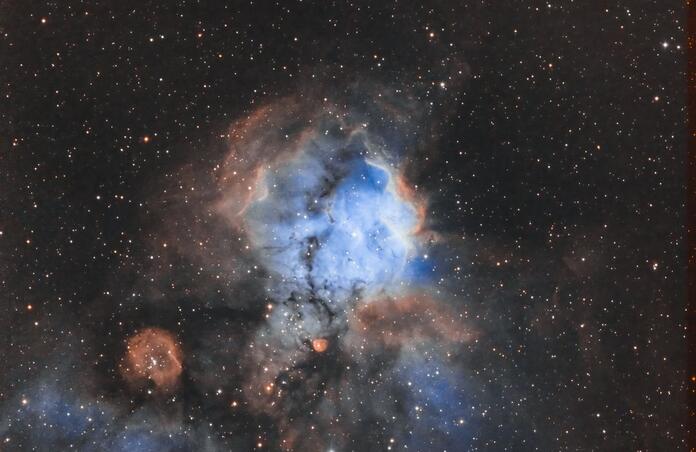Measuring the Deep Sky

We measure the sky and objects in degrees of arc, which can be further divided into arcseconds and arcminutes. This is important to know because the cameras used in astrophotography are spec’d in the size of the sensor’s pixel, and how many arcseconds of the sky are covered by one pixel, stated as arcseconds per pixel.
Small objects, like individual stars, fit onto one pixel, while a larger target covers multiple pixels.
The sizes of celestial objects are measured by their angular diameter as seen from Earth rather than their actual sizes. These angular diameters are relatively small; it is common to present them in arcseconds (″) or arcminutes (‘).
The @telescopelive instruments have pixel scales with their corresponding field of view:
(And size comparisons)
CHI-1, 60cm F6.5 Reflector 0.62 arcsec/px 32' x 32' by comparison the Helix Nebula is about 16’ x 28’
CHI-2, 50 cm F3.8 Reflector 0.98 arcsec/px 67' x 67' about the size of the Orion Nebula
CHI-3, 100 cm F6.8 Reflector 0.27 arcsec/px 19' x 19'
CHI-4, 50 cm F3.6 Reflector 0.98 arcsec/px 67' x 67'
CHI-5, 10 CM F2.0 Refractor 6.3 arcsec/px 473' x 378' about the size of the Coalsack Nebula
CHI-6, 20 CM F3.0 Reflector 2.06 arcsec/px 155' x 124' about the size of the Carina Nebula
AUS-2, 10cm F3.6 Refractor 4.74 arcsec/px 324' x 324' about the size of Rho Ophiuchi cloud complex
SPA-1, 10cm F3.6 Refractor 4.74 arcsec/px 324' x 324'
SPA-2, 70cm F8.0 Reflector 0.33 arcsec/px 23' x 23'
SPA-3, 10cm F3.6 Refractor 4.74 arcsec/px 324' x 324'
By knowing the object size, from a star atlas, you can select the appropriate telescope and field of view to best image the object within the frame.
#### 26AUG2021
NGC 2467 - SKULL AND CROSSBONES NEBULA
Pro Data Set by Peter Jenkins; Processing by Jim DeLillo
This blog post was originally published in our Telescope Live Community.
The Community represents Telescope Live's virtual living room, where people exchange ideas and questions around astrophotography and astronomy.
Join the conversation now to find out more about astrophotography and to improve your observation and post-processing skills!
